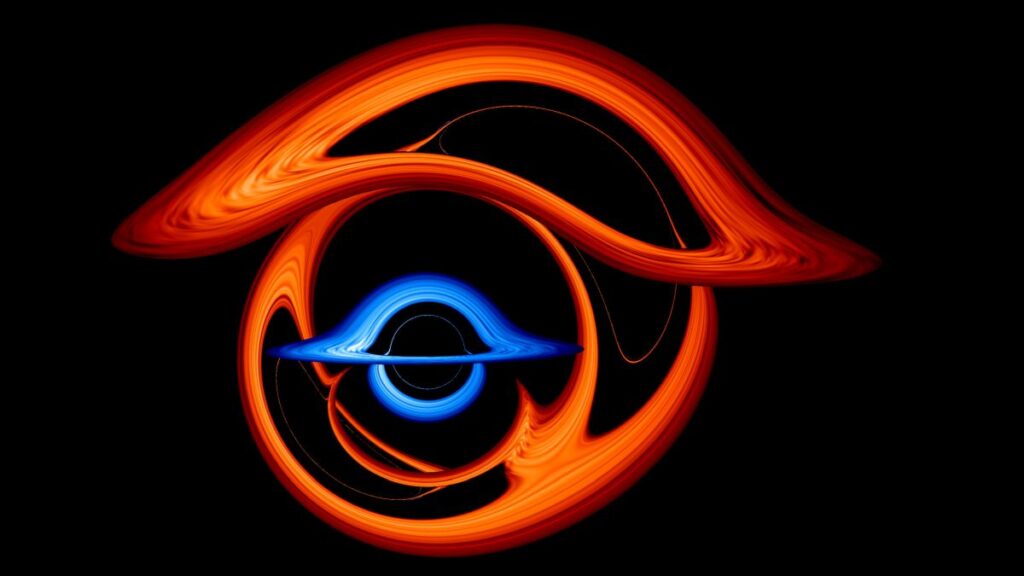
A groundbreaking direct radio image has unveiled the intricate dance of two black holes locked in a perilous orbit within the galaxy known as OJ 287. This remarkable achievement marks the first time astronomers have imaged the distinct particle jets emitted by both black holes in a confirmed binary system. Located approximately 3.5 billion light-years away, OJ 287 has been the subject of intense study for decades, but this new image provides compelling evidence confirming theories about its dual supermassive black hole structure.
The image reveals the significant interplay between the two black holes, which are situated at the heart of a quasar—a type of galaxy recognized as one of the brightest objects in the universe. The brightness stems from the supermassive black hole at the center, which actively consumes material from a vast disk surrounding it. As this material spirals inward, it is subjected to extreme friction and gravitational forces, generating intense heat and light.
Astronomer Mauri Valtonen from the University of Turku in Finland emphasized the importance of this finding. “For the first time, we managed to get an image of two black holes circling each other. In the image, the black holes are identified by the intense particle jets they emit,” he explained. While the black holes themselves are invisible, their presence is indicated by these jets and the glowing gas that encircles them.
OJ 287 is unique among quasars due to its periodic brightness fluctuations, first noted in 1982. These variations suggest the presence of an orbiting companion to the central black hole, which follows a peculiar path that disrupts the surrounding material disk. Valtonen noted, “What is special about OJ 287 is that it has been thought to harbor not one but two black holes circling each other in a twelve-year orbit, which produces an easily recognizable pattern of light variations in the same period.”
When black holes actively consume matter, they can produce powerful astrophysical jets. These jets are formed when material from the innermost edge of the disk is directed along magnetic field lines away from the event horizon. As the jets reach the poles, they are ejected into space at incredible speeds. Previous studies had confirmed the existence of a jet from the larger black hole, which measures an astonishing 18 billion solar masses. In contrast, identifying a jet from the smaller black hole, weighing around 150 million solar masses, had proven challenging.
The research team utilized data from the RadioAstron mission, which employed a very long baseline interferometer to achieve unprecedented resolution. The data allowed astronomers to pinpoint structures in OJ 287 that are 3.5 billion light-years away, akin to imaging a coin on the Moon’s surface. They revisited the RadioAstron data to search for jet features associated with the feeding smaller black hole and calculated how the motion of this black hole would alter the trajectory of its jet.
The results were illuminating. The researchers discovered that one feature in the RadioAstron map closely matched the theoretical predictions for the smaller black hole’s jet trajectory. The main jet was observed streaming diagonally across the galactic core, while a fainter streak aligned with the expected path of the smaller black hole’s jet. Notably, the Doppler properties indicated that this secondary jet is moving at approximately half the speed of the primary jet.
This groundbreaking image serves as the first visual evidence of two astrophysical jets originating from separate supermassive black holes. The research team plans to conduct further observations to verify these findings, with an additional radio map of OJ 287 currently in development. The next opportunities for observation may arise in the 2030s when the secondary jet becomes visible again.
The team’s findings have been published in The Astrophysical Journal, marking a significant advancement in our understanding of black hole interactions and the dynamics of binary systems. This research not only sheds light on the behavior of supermassive black holes but also enhances our comprehension of the universe’s most enigmatic phenomena.







